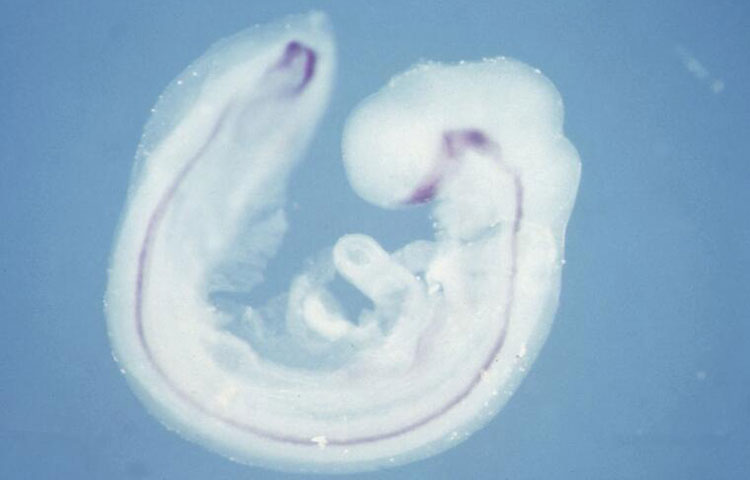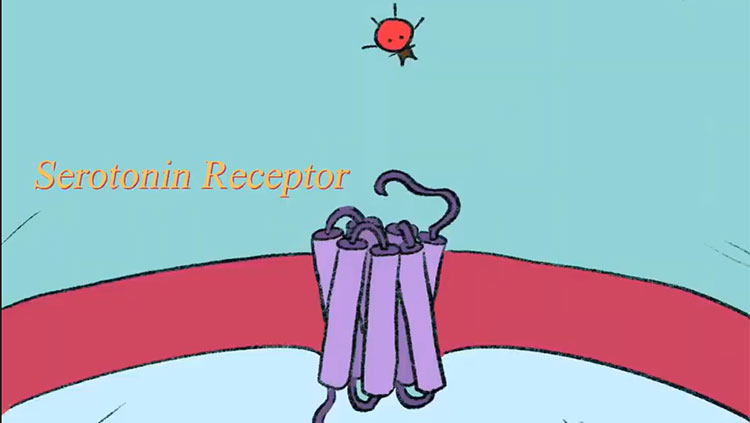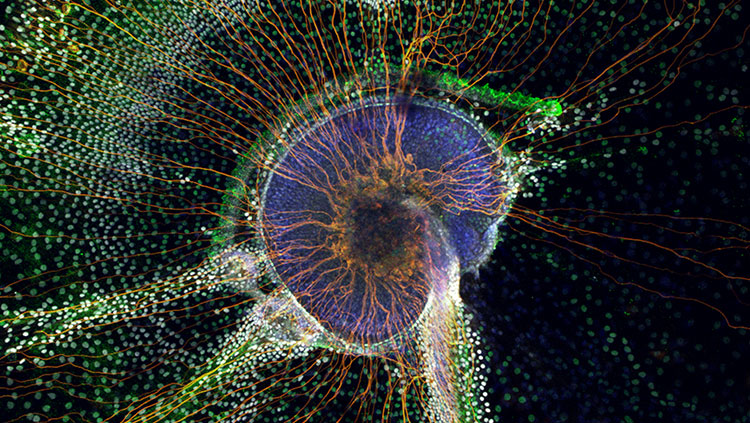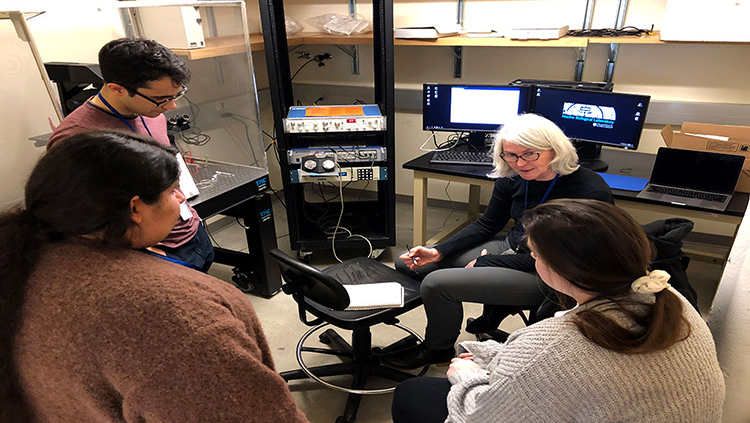Targeting Sonic Hedgehog Protein May Help Parkinson's Patients
- Published31 Jan 2022
- Author Zunnash Khan
- Source BrainFacts/SfN

Everyday tasks like grasping and sipping from a mug of coffee present a challenge for people with Parkinson’s Disease (PD). As the disease progresses, they may struggle to speak, swallow, or even blink. In 1970, the drug levodopa proved a godsend to restoring movement by boosting levels of the neurotransmitter dopamine, which is depleted in Parkinson’s. But it’s not a permanent fix — eventually nearly 90% of patients will develop erratic movements and writhing as a result of treatment with the drug.
Patients are essentially forced to choose between a debilitating disease and an equally debilitating side effect of treatment. A recent study offers some hope: researchers found diminished levels of a protein called sonic hedgehog causes these involuntary movements, or dyskinesias. Targeting this protein pathway might one day relieve the debilitating side effect and bring relief to millions.
The sonic hedgehog protein, named for a video game character, directs the formation and growth of organs in embryos. But tantalizing clues implicated the molecule in the functioning of the brain’s movement circuits, the very ones that deteriorate in Parkinson’s disease. One study, for instance, found injecting rats with a sonic hedgehog gene therapy protected dopamine neurons in the substantia nigra from a toxin that normally induces Parkinson-like symptoms. Parkinson’s disease researcher Andreas Kottmann was intrigued. “Before, this molecule was always associated with neurodevelopment and embryology,” he says. He wanted to know whether sonic hedgehog was normally in the brain and, if so, what it was doing there.
In a 2012 study in mice, Kottmann and his colleagues at Columbia University established that dopamine neurons in the substantia nigra produced sonic hedgehog. What’s more, it played a critical role in maintaining neurons in the substantia nigra and striatum, two regions crucial for movement. Mice lacking sonic hedgehog appeared normal at birth, but as they got older, dopamine neurons in the substantia nigra and acetylcholine-producing neurons in the striatum degenerated and died. Eventually the mice struggled to walk and developed paralysis in their hind limbs before dying prematurely.

Kottmann, now at the CUNY School of Medicine, continued exploring how sonic hedgehog might be involved in dyskinesia. If Parkinson’s kills dopamine neurons in the substantia nigra, it would also cut off the supply of sonic hedgehog and disrupt other critical nodes in the movement circuit.
In a study published in September 2021, Kottomann and team induced Parkinson-like symptoms in mice using a toxin that destroys neurons in the substantia nigra. L-dopa treatment ameliorated the mice’s symptoms, but they eventually developed abnormal, involuntary movements. For example, they struggled to hold their paws steady while climbing up a glass cylinder, causing them to slide off. So, the researchers treated them with a compound in conjunction with L-dopa: a molecule activating the same membrane protein sonic hedgehog activates downstream. The mice’s dyskinesias faded. The strategy worked in a different mouse model of Parkinson’s as well as in a model with macaque monkeys.
"Our experiments show that sonic hedgehog was necessary and sufficient to block dyskinesias or to induce them if it’s not present."
What’s more, in separate experiments, mutant mice lacking either sonic hedgehog or the downstream protein it activates developed dyskinesias when given L-dopa.
“Our experiments show that sonic hedgehog was necessary and sufficient to block dyskinesias or to induce them if it’s not present,” Kottmann says. The major strength of the study, he adds, is the multi-pronged approach they took. “That’s why we’re sure that sonic hedgehog plays a role in causing dyskinesias.”
The results confirm Kottmann’s suspicions that L-dopa throws the careful balance of dopamine and sonic hedgehog out of whack. “In PD, you give the patient dopamine, but you don’t give them the replacement for hedgehog signal, so that messes up the circuit,” says Suzanne Pfeffer, a Stanford biochemist who studies genetic forms of Parkinson’s disease and was not involved in the study.
Still, it doesn’t stand solved yet. Kottmann notes all the drugs used to stimulate sonic hedgehog in animals are carcinogenic. But, as Parkinson’s usually strikes in older patients, in some cases the benefit may outweigh the risks. Scientists may also find ways to target other proteins further downstream in the sonic hedgehog signaling pathway to gain the same overall effect.
“I’m excited for Parkinson’s patients,” Pfeffer says. She’s hopeful scientists will find a way to mitigate the side effects of L-dopa therapy. “In my own research, I’m excited because it says it’s very important for us to understand this pathway in greater detail in order to find additional ways to help patients with dyskinesia.”
CONTENT PROVIDED BY
BrainFacts/SfN
References
Gonzalez-Reyes, L. E., Verbitsky, M., Blesa, J., Jackson-Lewis, V., Paredes, D., Tillack, K., Phani, S., Kramer, E. R., Przedborski, S., & Kottmann, A. H. (2012). Sonic hedgehog maintains cellular and neurochemical homeostasis in the adult nigrostriatal circuit. Neuron, 75(2), 306–319. https://doi.org/10.1016/j.neuron.2012.05.018
Malave, L., Zuelke, D. R., Uribe-Cano, S., Starikov, L., Rebholz, H., Friedman, E., Qin, C., Li, Q., Bezard, E., & Kottmann, A. H. (2021). Dopaminergic co-transmission with sonic hedgehog inhibits abnormal involuntary movements in models of Parkinson’s disease and L-Dopa induced dyskinesia. Communications Biology, 4(1), 1–16. https://doi.org/10.1038/s42003-021-02567-3


















